
In Flight

Spruce Goose
The brainchild of Liberty Ship builder Henry J. Kaiser to get military ordinance past the North Atlantic U-boat threat during WWII, the plane is designed by Howard Hughes (the largest aircraft built at the time, designated HK1 to reflect the collaboration between Kaiser and Hughes) to carry 150,000 pounds of supplies, 750 fully equipped soldiers, or two 30-ton M4 Sherman tanks ... a big, massive plane to defy the laws of gravity.
Hughes
Kaiser
Federal contract awarded to build three prototypes in two years, the final design of the flying cargo ship calls for a craft that carries a crew of three, has a length of 218 feet and 8 inches, has a wingspan of 320 feet and 11 inches, stands 79 feet and 4 inches tall, weighs 400,000 pounds fully loaded, is powered by 8 Pratt & Whitney R-4360 Wasp Major radial engines (each with a 3,000 hp capacity), each attached to four-bladed Hamilton Standard prop ... the plane can cruise at 250 mph, has a range of 3,000 miles, and has a service ceiling of 20,900 feet.
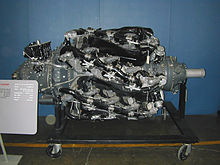
Pratt & Whitney Wasp Major Motor
Rear Look Down the Fuselage
Building supplies limited, a frustrated Kaiser eventually drops out of the project when Hughes' need for perfection (and that of his chief engineer, Glenn Odekirk) drives the steel man crazy as the build of the first plane takes 16 months of intensive labor (and $22 million). Metals too heavy or not available during the allocation crunch that takes place during the war, the plane is put together at the Hughes Aircraft Company in Playa Vista, California, using very thin strips of a specially treated wood veneer composite of birch (very little of the plane is spruce, despite the craft's nickname ... which Hughes hated) and resin put together by the women workers of Wisconsin's Roddis Manufacturing Company.

Odekirk

Hughes Airport
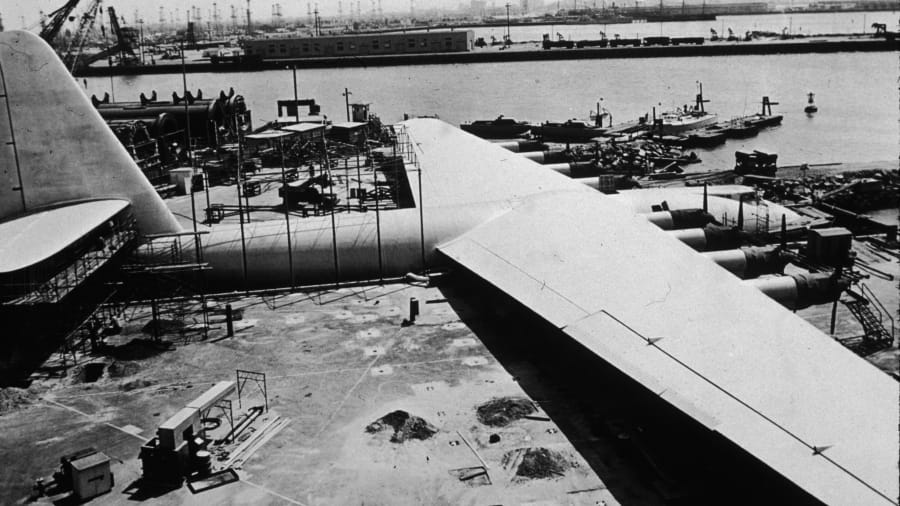
Under Construction
The plane is so big, that for final assembly, a house moving company is hired to transport the plane to Pier E in Long Beach, California ... in four sections/trips ... the fuselage, the right wing, the left wing, and the tall section with other smaller assemblies. A hanger is erected around the plane (no small feat, the structure is 315,000 square feet large!) and a ramp is built to launch the H-4 into Long Beach Harbor. Testifying before a senate committee investigating business practices during the war, his reputation at stake, critics out for blood, Hughes vows to leave the country if the plane won't fly. On Sunday, 11/2/1947, during a break from his testimony before the committee, Hughes flies back to Long Beach to see if the Hercules can get into the air.
Road Hazard
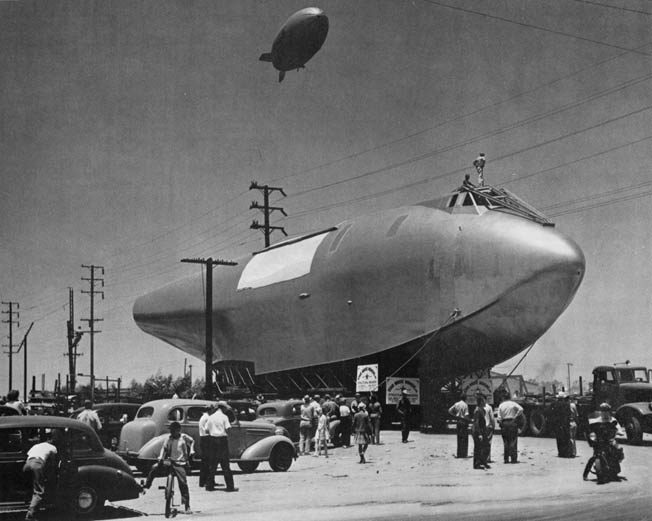
Road Hazard
Road Hazard
Wind and water conditions right, for the maiden voyage of the Hercules, 36 individuals are aboard the plane ... Hughes, copilot Dave Grant, flight engineers Don Smith and Joe Pterali, 16 mechanics, two flight crew members, seven invited members of the press, and seven aircraft industry guest representatives.
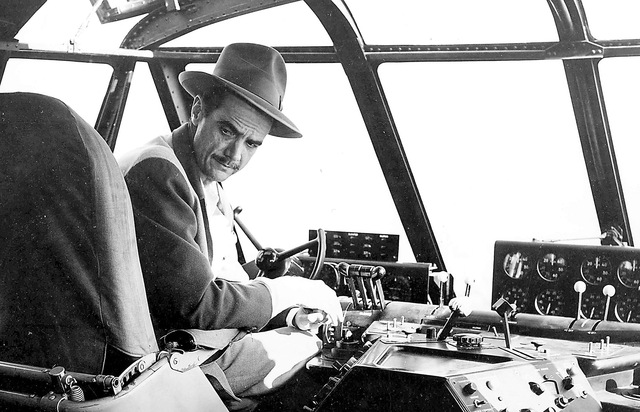
Getting Ready - Hughes At The Controls
The Crew

In The Water

Long Beach
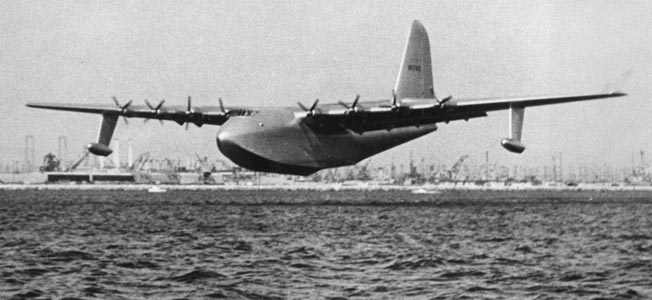
Up
Flight proven, the war over and cost overruns keep the project from every blossoming beyond the first up of the Hercules ... its lifting capacity and ceiling are never tested, and the plane goes into storage. A favorite toy of Hughes', just in case the need for a monster plane should arise again, the aerial mogul has a staff of 300 employees, sworn to secrecy, maintain the plane in flying condition in a climate-controlled hanger until 1962, then the staff is cut to 50 until Hughes' death in 1976. Master gone, in 1980, the Aero Club of Southern California puts the plane on display in a large dome adjacent to the Queen Mary. In 1988, the Walt Disney Company acquires both attractions, but when its plans to create a Port Disney are scrapped, the company looks for new ownership for the plane, finally settling on the Evergreen Aviation & Space Museum in McMinnville, Oregon (for payments and a portion of Museum's profits) ... a decision that results in a 1,055 mile ride to the north that takes 138 travel days by barge, train, and truck. The Hughes H-4 Hercules can be seen there every day of the year except for Thanksgiving, Christmas, and Easter for an adult entrance fee of $25.

The Evergreen Aviation & Space Museum Exhibit
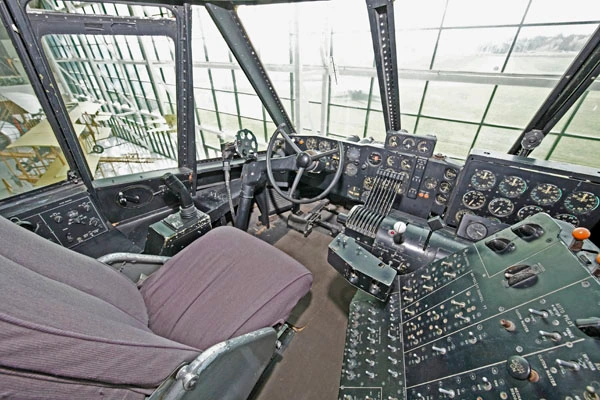
Pilot's Seat

On Display
No comments:
Post a Comment